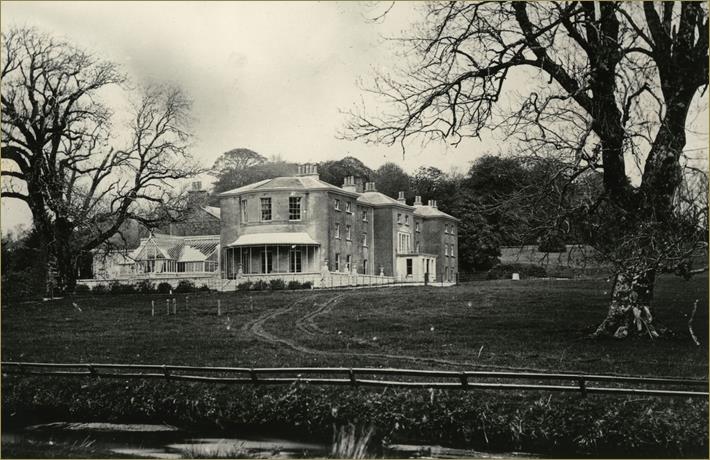


THE HISTORY OF TREBARTHA HALL - Extracts from a talk by Robert Latham in October 2011 |
||||||||||||||||||||||||||||||||||
| <<< To return to the "Trebartha & Trebartha Hall" page. | ||||||||||||||||||||||||||||||||||
| ||||||||||||||||||||||||||||||||||
| Click on a page number above. You are reading page 22 now. |
Trebartha Hall |

|
|
The ‘Historic Survey of the County of Cornwall’ in 1838 states that the house was demolished at some stage but picture records indicate that the original structure remained. This photo shows the second phase of the later house, started by Charles Grylls. You can see the conservatory which was latterly built. C S Gilbert in his ‘Historical Survey of the County of Cornwall’ of 1838 said “Colonel Rodd erected a large tasteless building which appears to be deplorably destitute of architectural ornament. The front opens into a large paddock, the soil of which is rather swampy and the dampness prevails even in the dry seasons. Near the house are good gardens and a shrubbery and hothouses and several neat gravel walks. The whole area is surrounded by extensive plantations, the extremities of which are sheltered by an amphitheatre of bald hills which bear on their brows tors of the most sublime and frowning appearance”. Trebartha passed from the Spoure family to the Rodds in 1729. The last Spoure was Mary who can be seen as a small child kneeling in the Spoure monument in the Spoure chapel in North Hill church. Mary first married Renatus Bellott of Bochym (near Mullion), whose son Renatus died in 1712 aged 8, her husband following shortly thereafter [sic – Renatus Bellott Esquire was buried at Cury on 22 May 1710]. Mary then married Charles Grylls of Lanreath and it was about this time that the 1500 house was destroyed in a fire. Charles Grylls built a replacement in 1720. His son George died in the same year to be followed by Charles in 1727. Mary then became betrothed to her cousin, Captain Francis Rodd of Oakhay in Devon, only to die of smallpox in 1729 before the marriage could be arranged, but she bequeathed her estate to her fiancé. The Spoure inheritance at that time included Trekernel, Tolcarne, Trevenial, Stonaford, Bowda going towards the waterworks and Lemarne. Colonel Francis Rodd inherited Trebartha in 1736 when aged 4. He was to be squire until 1812. In that period the estate expanded to include Trevague, Lamalla and Battens. Trebartha Hall doubled in size and new attic floors were added. It is said that a slate fell killing the squire’s young bride for whose children the extension was intended and the ornamentation was never completed. This may be a legend as the alterations would appear to be dated around 1750. Colonel Francis Rodd also extended the estate to Bolventor where he built a church in 1847 and a also rectory to encourage a new community that would grow corn. The nearby Jamaica Inn was named after a Governor of Jamaica, Sir William Trelawney, who was governor from 1767-1772. The inn was built around 1750 and may have been originally known as The New Inn, Bolventor. |
The image at the top of the page shows views of and around Trebartha Hall used by Robert Latham in his talk. |